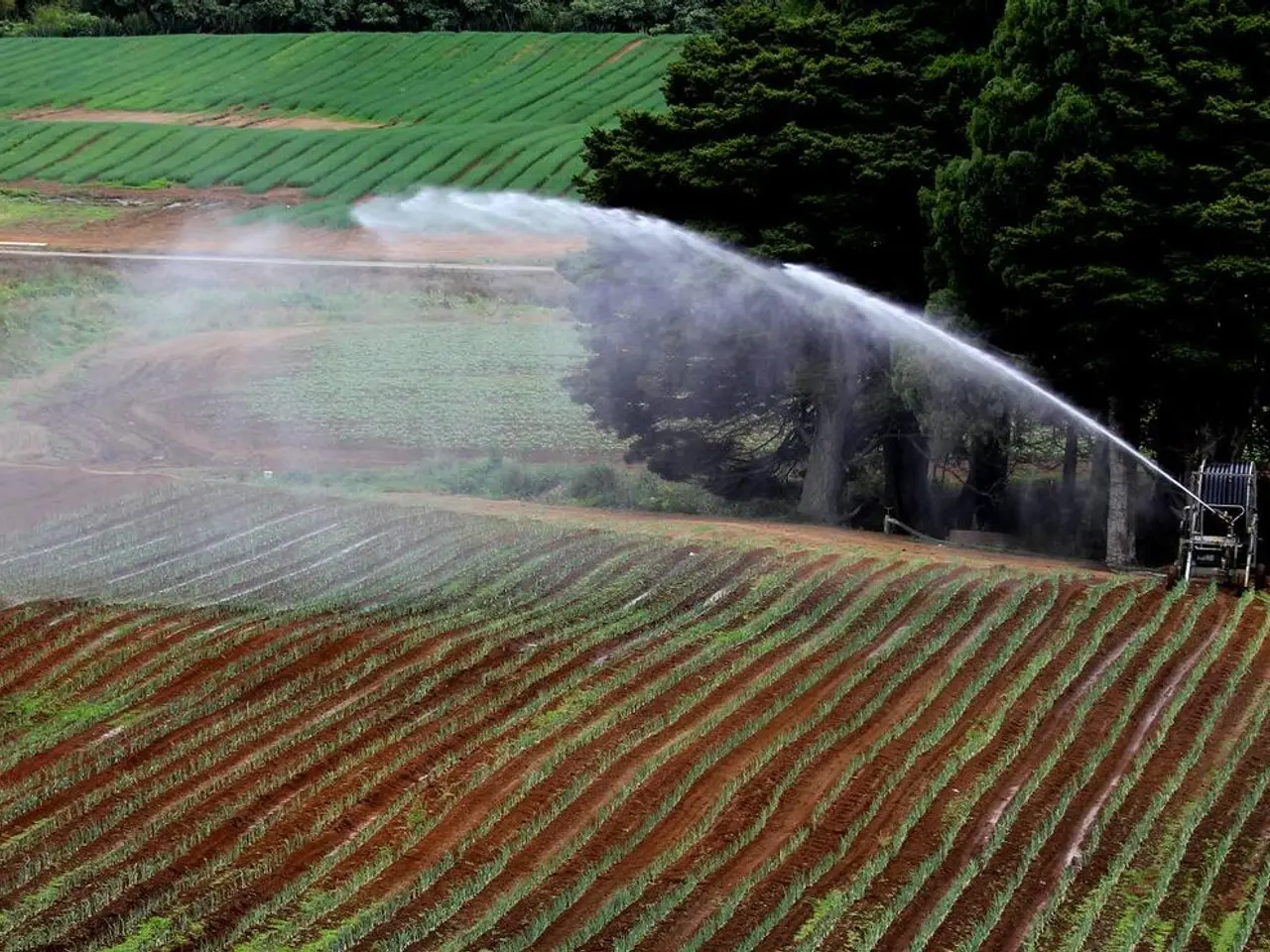Rotavator: A multi-purpose garden tool used for tilling, aerating, and cultivating soil, beneficial for preparing areas for seeding or planting.
A rotavator is a versatile gardening tool that is essential for breaking up previously un-dug ground, especially hard and compacted soil. These motorized machines, equipped with rotating blades or tines, are designed to aerate and prepare the soil for various gardening and landscaping activities.
Rotavators come in various sizes, ranging from small hand-held models similar to a lawnmower to large agricultural ones that attach to tractors. For casual gardeners, lighter tools like a broad fork, scuffle hoe, or aerator may suffice for preparing soil. However, for larger-scale operations, such as market farms, a rotavator's power is indispensable.
One important factor to consider when using a rotavator is its physical demand. These heavy-duty tools require a lot of effort to operate, so individuals with mobility issues or those working alone should be aware of this.
Soil type plays a significant role in the effectiveness of a rotavator. Sandy or loam soil is easiest to work with, while clay soil that has never been dug can be challenging, especially when wet. In such cases, it's best to wait until the soil is moist but not wet to use a rotavator.
When using a rotavator, it's crucial to prepare the soil area by removing weeds, stones, and debris that could damage the blades. It's also essential to dress appropriately with protective gear, including boots, ear defenders, safety goggles, and gloves.
The slicing action of a rotavator can potentially spread invasive weeds further, so it's important to be mindful of this and take necessary precautions. Additionally, a rotavator will dig up weeds, but it also brings buried weed seeds up to the surface where they can re-root.
A rotavator can be a time-saver for large-scale gardening tasks, such as starting hundreds of seeds every spring. It's also useful for digging over an area that you want to level, but it won't create a level surface by itself. After breaking up the earth with a rotavator, you will need to use a garden rake to level the surface or a wheelbarrow and spade to move soil from one area to another to achieve an even result.
When it comes to choosing the right rotavator, there are several reputable companies to consider, such as Howard, Agrimaster, Maschio, Bomet, Enorossi, Imants, Celli, and Humer. The working width of these machines ranges from about 85 cm to 2 meters, depending on the model. For example, Howard offers rotavators with widths of 85 cm and 110 cm, while Bomet provides models up to 2 meters wide.
In practice, it may take several passes of adjustment to fully flatten land using a rotavator. It's recommended to work systematically over the prepared area, working in straight lines that slightly overlap each other.
In summary, rotavators are valuable tools for gardeners and farmers alike, offering benefits such as time-saving, improved soil aeration, and ease of preparing large areas for planting. However, they require proper usage and maintenance to ensure their longevity and effectiveness.
Read also:
- Education Exhibition: August 2024 Display and Demonstration
- Enhanced solar power for 600-watt power stations: the BOOSTER unit offers an upgrade.
- Frugal Living Revealed: 7 Effective Tips from the Amish Community That Could Save You a Fortune
- Revolutionizing healthcare through Remote Patient Monitoring Systems: A life-changing approach!




